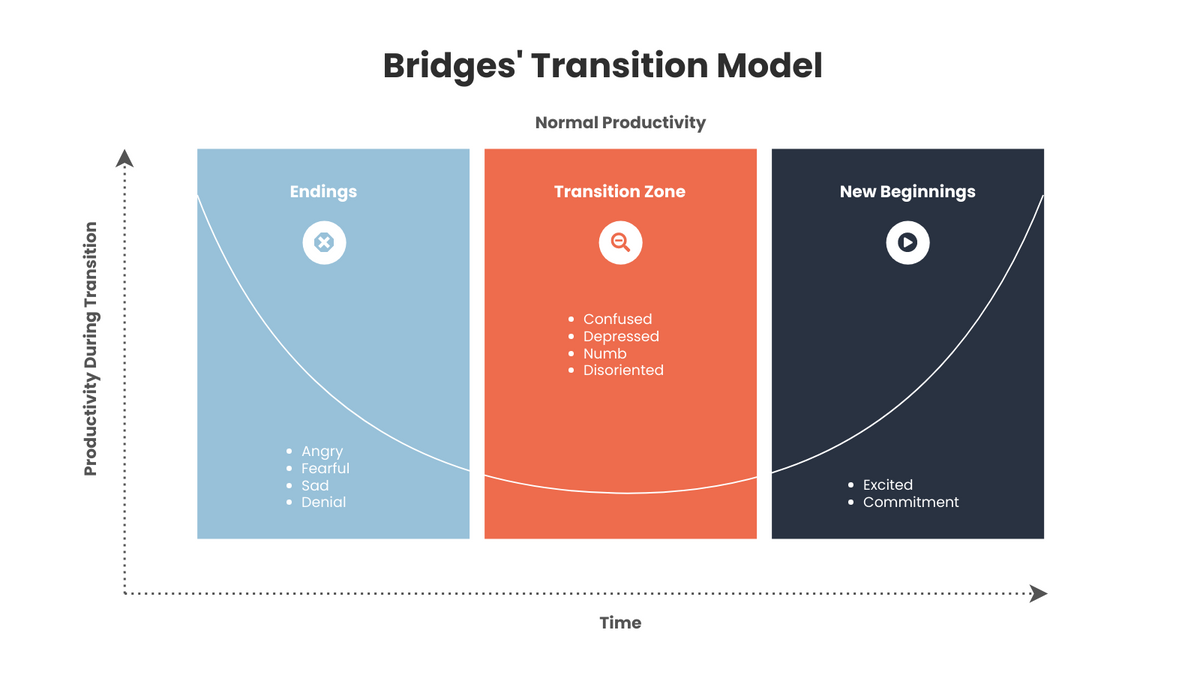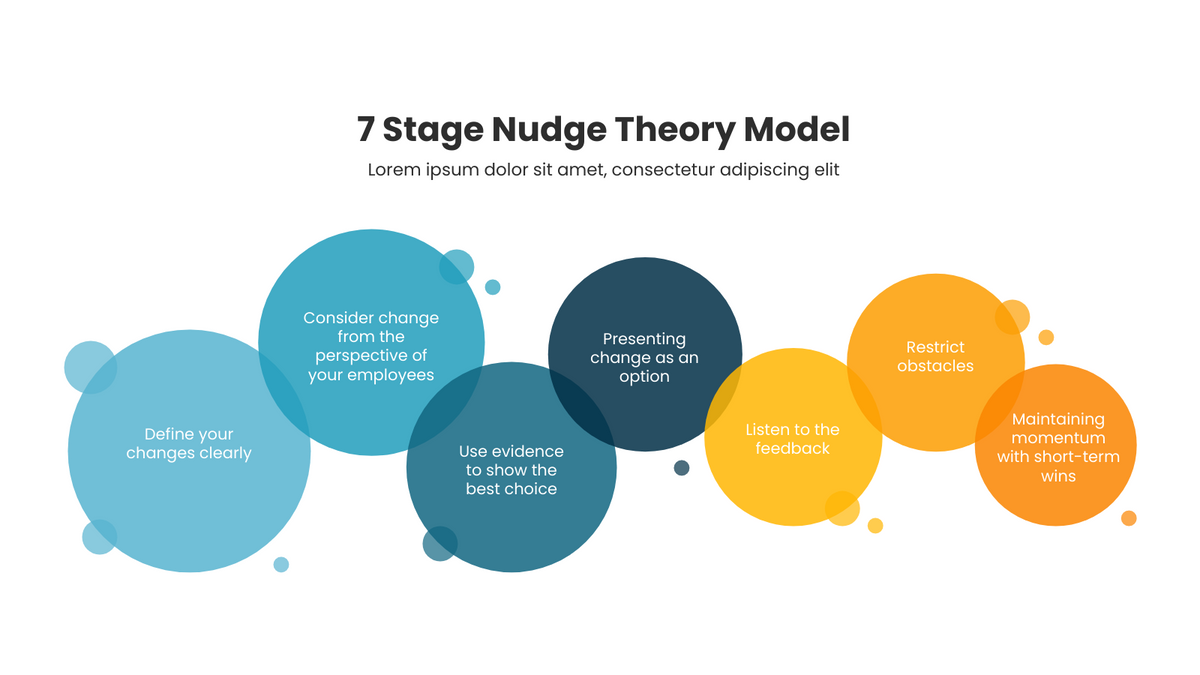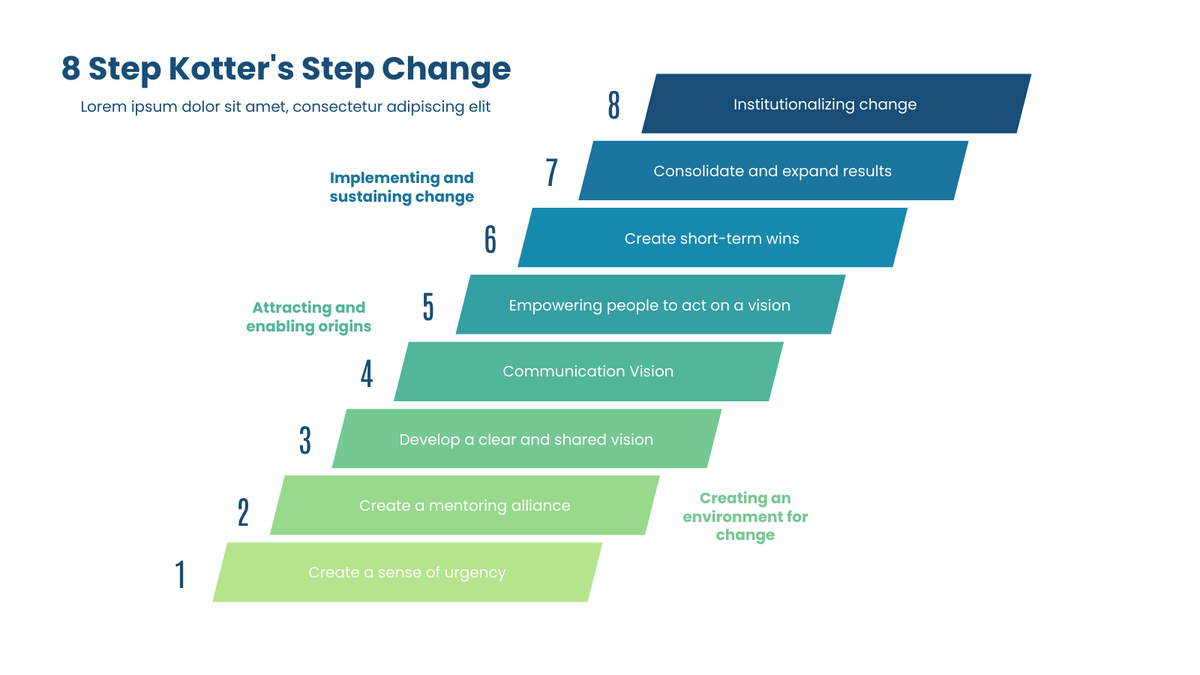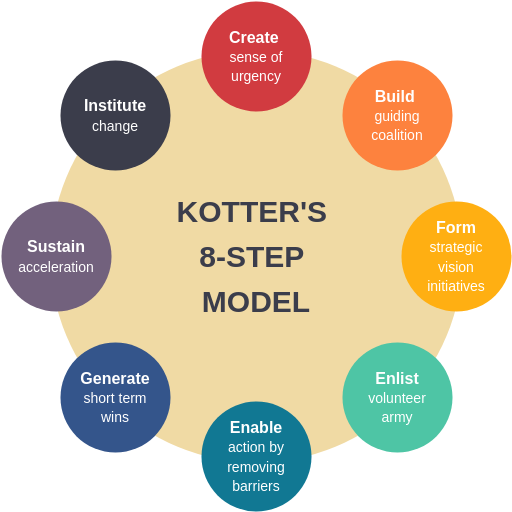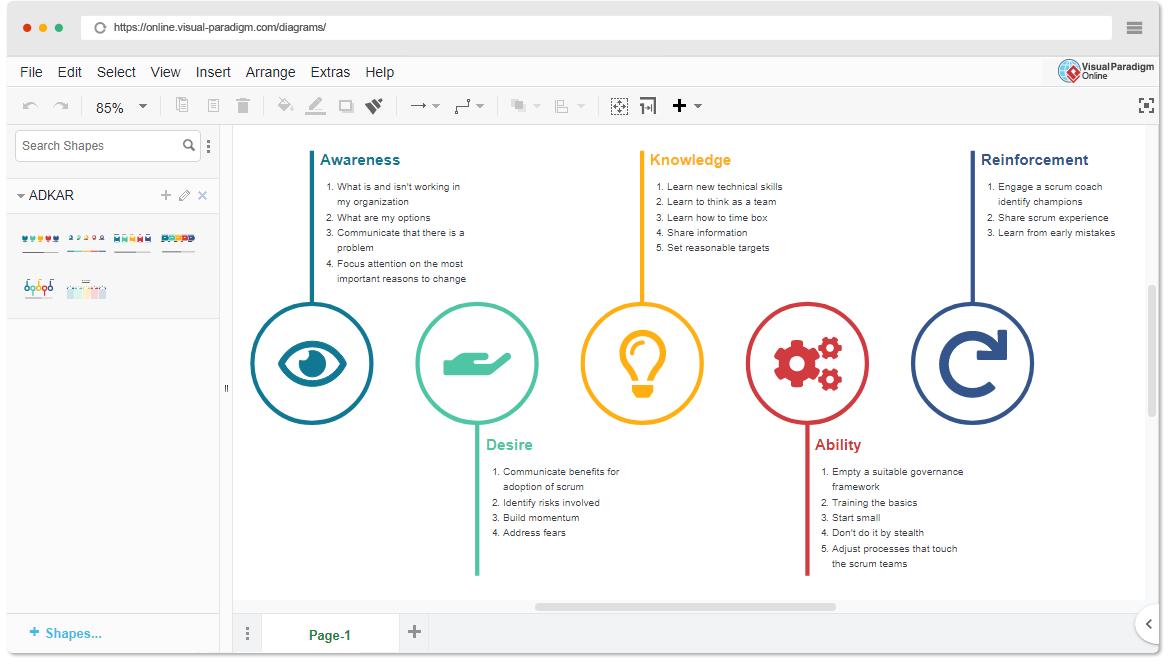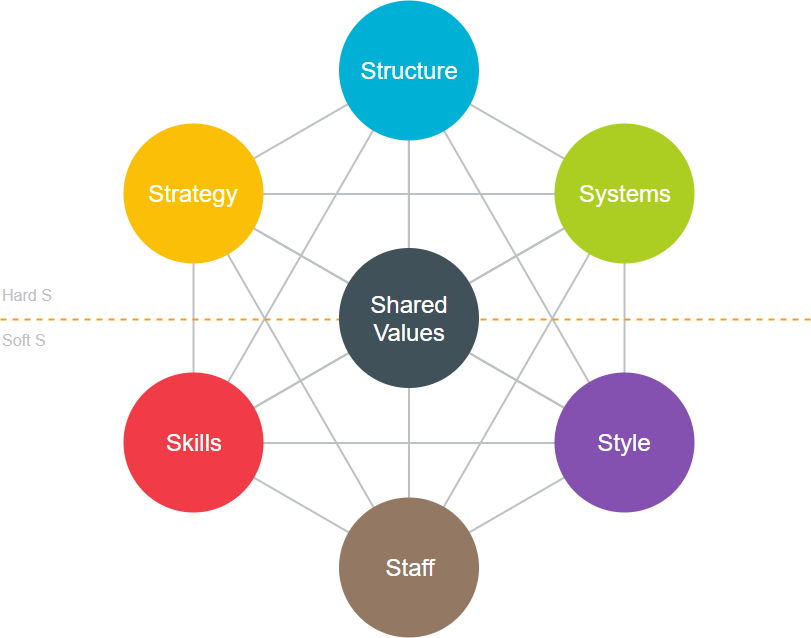Home » Archives for Admin » Page 2
The Bridge Transition Model, which focuses on transition rather than change. The idea of focusing on transition rather than change is not only a matter of wording, but it also devises an entirely different approach to change management. Only when leaders and organizations solve the transformation problems encountered by people in the process of change can change succeed. If the change is to be carried out as planned, the key is to support people to realize the transformation, rather than forcibly complete the transformation. This is the key to taking advantage of innovation opportunities and creating organizational flexibility.
Customer journey mapping is a very useful technique to help you understand your customers' motivations - their needs, indecisiveness and concerns. While most organizations are quite good at collecting customer data, data alone cannot convey the frustrations and experiences of customers. One of the best storytelling tools in business is the customer journey map (CJM).
Was ist E-Mail-Marketing? EDM-Marketing (Electronic Direct Mail) wird auch genannt: E-Mail-Marketing, E-Mail-Marketing. Es ist ein Marketinginstrument zur Verkaufsförderung, indem EDM-E-Mails an Zielkunden gesendet, Kommunikationskanäle mit ihnen eingerichtet und relevante Informationen direkt an sie übermittelt werden. BEARBEITEN SIE DIESE E-MAIL-MARKETING-ILLUSTRATION E-Mail-Marketing besteht aus drei Grundelementen: Benutzererlaubnis, E-Mail-Nachricht und der Wert der Nachricht an den Benutzer. Fehlt eines dieser drei Elemente, kann man von effektivem E-Mail-Marketing nicht sprechen. E-Mail-Marketing ist eine Direktverkaufsmethode, bei der E-Mails zur Kommunikation mit Kunden verwendet werden. Auch im Bereich des Online-Marketings ist es weit verbreitet. E-Mail-Marketing ist eine der ältesten Methoden des Online-Marketings. Man kann…
continue reading →
Was ist die Nudge-Theorie? Manchmal denken wir, wir wollen, dass andere Entscheidungen so treffen, wie wir es wollen, und es ihnen direkt sagen, aber das geht oft nach hinten los, selbst wenn wir echte Macht über andere haben, wie Lehrer, Eltern, Chefs usw. Wenn Sie jemanden beraten müssen die Ihre Entscheidung ablehnen könnten, hat sich gezeigt, dass die Verwendung indirekter Ratschläge zu besseren Ergebnissen führt. BEARBEITEN SIE DIESE ABBILDUNG Die Nudge-Theorie tauchte erstmals im frühen 21. Jahrhundert in den Vereinigten Staaten auf, als ein radikaler Weg, um zu beeinflussen, wie Menschen mit dem…
continue reading →
John Kotter, a professor at Harvard Business School, has studied many companies that have successfully implemented change in their organizations. This led him to develop a common eight-step model that other organizations can follow to make change. He describes his eight-step change process in his book, Leading Change. Although described as a model for change management and change leadership, it is worth noting that Kotter's eight steps are closely related to improvement planning. The human tendency toward routine means that change is a conscious desire to improve things or the need to adapt to changing circumstances.
The 8 steps in the process of change include: creating a sense of urgency, forming powerful guiding coalitions, developing a vision and a strategy, communicating the vision, removing obstacles and empowering employees for action, creating short-term wins, consolidating gains and strengthening change by anchoring change in the culture. Kotter’s 8 step model can be explained with the help of the illustration given below:
The 7-S model states that all aspects of a company must be considered holistically in the development process. It includes structure, systems, style, staff, skills, strategy and shared values. In other words, it is not enough for a company to have a clear strategy and a well-thought-out action plan, because companies can also make mistakes in the process of implementing their strategies. This is because strategy is only one factor.
Change is often a complex and difficult process, and more importantly, it is inevitable. Managing change at the individual and organizational levels requires new ideas, new models of change, and new frameworks and tools to successfully achieve the desired change. ADKAR can be applied to all forms of change to drive successful change programs. The ADKAR Transformation Model, created by Prosci founder Jeff Hiatt, consists of five initials that represent the five stages of change an individual must reach to succeed. Awareness, Desire, Knowledge, Ability and Reinforcement.
The McKinsey 7S Model ( also known as 7S Model for short) is the seven elements of a business organization designed by the McKinsey & Company Research Center, which states that companies must consider all aspects of the development process in a comprehensive manner, including structure, systems, style, staff, skills, strategy, and shared values - the seven skills, strategies, and shared values.
Many models have been developed to explain organizational change. One of the earliest models was developed by Kurt Lewin, a German psychologist and researcher on communication and organizational development. Lewin's three-step approach views change as a break in organizational equilibrium, or a thaw. Once the thaw is complete, the change itself can be introduced, but simply introducing the change does not ensure that the change will last; the new state needs to be refrozen. The new state needs to be refrozen so that it can be maintained for a significant period of time. Thus, the purpose of refreezing is to stabilize the new state by balancing the two forces of driving and binding forces.

